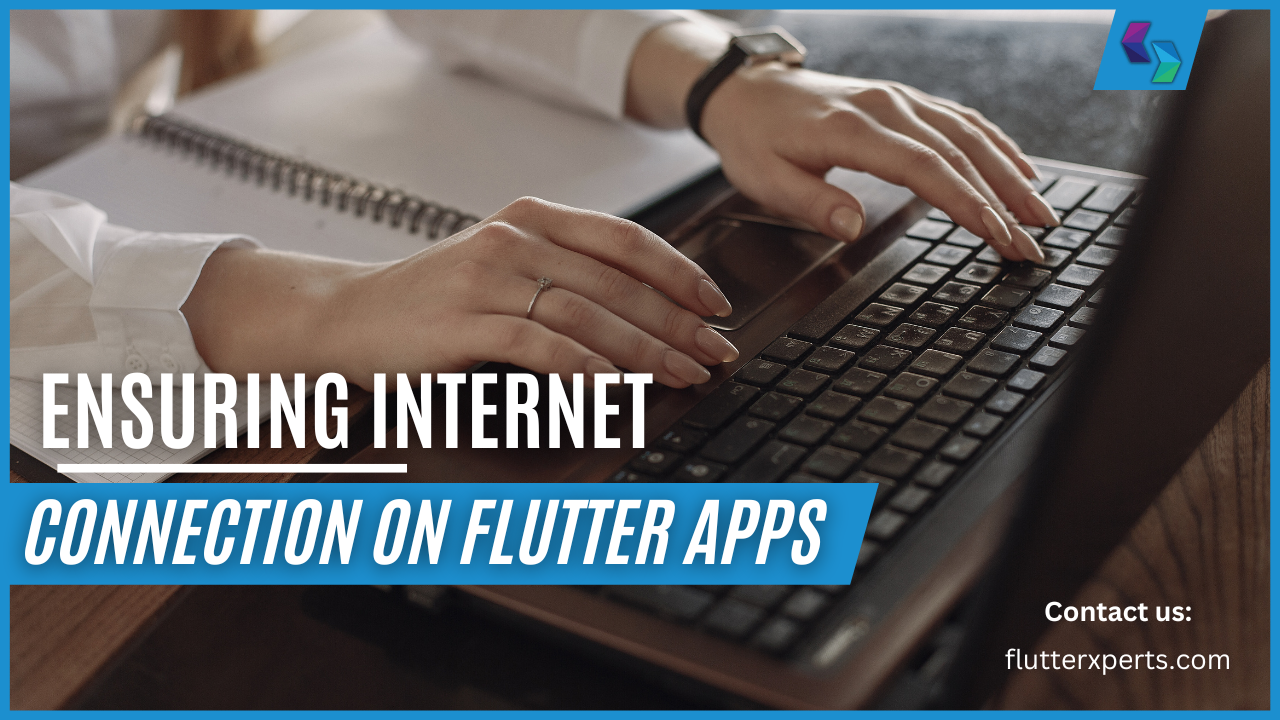Ensuring Internet Connectivity in Flutter: A Comprehensive Guide
Introduction
Mobile apps today heavily rely on an Internet connection to provide real-time data and enhanced user experiences. Flutter, Google’s UI toolkit for building natively compiled applications, offers powerful tools and libraries for handling internet connectivity seamlessly. In this comprehensive guide, we will explore various techniques and best practices for ensuring a reliable Internet connection in Flutter apps. From checking connection status to handling offline scenarios and optimizing network performance, this guide covers it all.
Importance of Internet Connectivity in Flutter Apps
Before diving into the technical details, let’s understand the significance of maintaining a stable Internet connection in Flutter apps. In today’s connected world, users expect apps to provide up-to-date information, real-time communication, and uninterrupted functionality. From social media apps to e-commerce platforms, the ability to seamlessly connect to the Internet is crucial for delivering a rich user experience.
Checking Internet Connection Status in Flutter
One of the fundamental aspects of ensuring Internet connectivity is to check the connection status within your Flutter app. By using Flutter’s connectivity plugins, such as the connectivity package, you can easily determine whether the device is online or offline. Let’s explore how to integrate this functionality into your Flutter app with a code example.
import 'package:connectivity/connectivity.dart';
// ...
Future<void> checkInternetConnection() async {
var connectivityResult = await (Connectivity().checkConnectivity());
if (connectivityResult == ConnectivityResult.none) {
// Device is offline
print('No Internet connection available.');
} else {
// Device is online
print('Internet connection available.');
}
}
Handling Offline Scenarios in Flutter Apps
In some cases, users might experience offline scenarios while using your Flutter app. It is crucial to provide a smooth experience even when the Internet connection is temporarily lost. Flutter offers mechanisms to handle offline scenarios gracefully by caching data, displaying offline indicators, and enabling offline capabilities within your app. Let’s explore how to handle offline scenarios effectively with a code example.
import 'package:connectivity/connectivity.dart';
// ...
void handleOfflineScenario() {
Connectivity().onConnectivityChanged.listen((ConnectivityResult result) {
if (result == ConnectivityResult.none) {
// Device goes offline
showOfflineIndicator();
} else {
// Device comes back online
hideOfflineIndicator();
syncData();
}
});
}
void showOfflineIndicator() {
// Show offline indicator UI
print('Offline mode activated.');
}
void hideOfflineIndicator() {
// Hide offline indicator UI
print('Back online.');
}
void syncData() {
// Synchronize data with server
print('Syncing data...');
}
Implementing Retry Mechanism for Network Requests
In real-world scenarios, network requests can sometimes fail due to temporary network issues or server unavailability. Implementing a retry mechanism can improve the robustness of your Flutter app by automatically retrying failed requests. Let’s explore how to implement a simple retry mechanism for network requests with a code example.
import 'package:http/http.dart' as http;
// ...
Future<void> sendNetworkRequest() async {
const maxRetries = 3;
var retries = 0;
var response;
while (retries < maxRetries) {
try {
response = await http.get(Uri.parse('https://api.example.com/data'));
break; // Request succeeded, exit the loop
} catch (e) {
retries++;
print('Request failed. Retrying...');
}
}
if (response != null) {
// Process the response
print('Request succeeded: ${response.statusCode}');
} else {
// Handle the failed request
print('Request failed after $maxRetries retries.');
}
}
Tips for Optimizing Network Performance in Flutter
To provide a snappy and responsive user experience, optimizing network performance in your Flutter app is crucial. There are several techniques and best practices you can follow to achieve optimal performance. Let’s explore some valuable tips for optimizing network performance in Flutter apps:
- Minimize network requests: Reduce the number of network requests by combining multiple API calls into a single request or implementing caching mechanisms.
- Compress data: Compress data before sending it over the network to minimize bandwidth usage and reduce latency.
- Implement pagination: For large datasets, implement pagination to fetch and display data incrementally, improving app performance and reducing the load on the network.
- Use background data sync: Implement background data synchronization to update data periodically and reduce the need for frequent manual refreshes.
- Leverage HTTP caching: Utilize HTTP caching mechanisms to cache responses and reduce unnecessary round trips to the server.
Conclusion
In this comprehensive guide, we explored various techniques for ensuring Internet connectivity in Flutter apps. From checking the connection status to handling offline scenarios and optimizing network performance, these strategies will help you deliver a seamless user experience. By implementing the code examples and following the best practices outlined in this guide, you can ensure that your Flutter app remains connected and responsive in various network conditions.
FAQs (Frequently Asked Questions)
Q: Can I use multiple connectivity plugins in my Flutter app? A: Yes, you can use multiple connectivity plugins in your Flutter app. However, it’s recommended to choose a single reliable plugin and follow its documentation for consistency and ease of maintenance.
Q: How can I test the offline functionality of my Flutter app during development? A: To test offline scenarios during development, you can disable the device’s network connection or use tools like Charles Proxy or Wireshark to simulate network disruptions.


